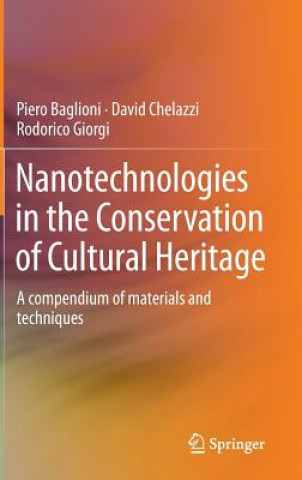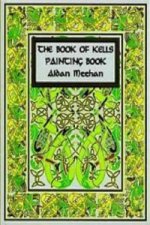
Livraison
Guide d'achat
16 124 818 livres à l’intérieur 175 langues






Afficher toutes les langues (175)
2 047 051 livres numériques à l’intérieur 101 langues






Afficher toutes les langues (101)





Cela ne vous convient pas ? Aucun souci à se faire ! Vous pouvez renvoyer le produit dans les 30 jours
 Bon d’achat
n'importe quelle valeur
Bon d’achat
n'importe quelle valeur
Impossible de faire fausse route avec un bon d’achat. Le destinataire du cadeau peut choisir ce qu'il veut parmi notre sélection.
Compendium of Nanoapplications for Conservators, 1
 Anglais
Anglais
 346 b
346 b
 common.delivery_to
common.delivery_to
Politique de retour sous 30 jours
Ceci pourrait également vous intéresser


This compendium deals with applications of novel nanotechnology for the preservation of several artistic substrates. Both the principles and practical usage of different innovative nanomaterials are presented and applications are discussed for different classes of common movable and immovable artistic substrates.§§The compendium contents are structured as follows: first, an overview is provided about the main "nanotools" that have been developed in the last three decades (dispersions of nanoparticles, micellar solutions, microemulsions and gels), explaining their main features and feasibility. Then, specific chapters are dedicated to art materials (wall and easel paintings, stones, paper, canvas and wood), starting with the main degradation paths and discussing applications for their cleaning, consolidation, or deacidification. In all such chapters a section will be dedicated to protocols, discriminating between protocols that are can already be considered as accepted in the restoration field and procedures that are still under validation. The principal aim of the book is thus to provide end-users and conservators with information on the availability and applicability of different nano-materials and dispersed systems. In fact, while the preservation of historical and artistic heritage has a fundamental societal and economic importance, the methodologies adopted are still largely based on traditional materials that often lack the proper compatibility with the artistic substrates or imply drawbacks that prevent the long-term conservation of works of art. This is also due to a still poor dissemination of the potential and real advantages of new tools provided by colloids and soft matter, which can indeed offer solutions to preservation issues while enhancing the compatibility of the used materials, granting longer stability to the treated artworks. Another important aspect that will be stressed is related to the low impact of the nanotools on both the operators and the environment, with respect to some traditional methods. Finally, much attention will be dedicated to keep a scientific rigor while granting accessibility also to end-users that might come from humanistic or artistic areas, or who have previously approached preservation basing on a purely technical and empirical formation. We believe, in fact, that the synergistic cooperation between different disciplines and skills is a fundamental step in the conservation of cultural heritage. The level of the compendium will thus be balanced, providing essential background and references to advanced colloid and material science, while maintaining the main focus on the practical problems and solutions that are usually met in restoration facilities, workshops and ateliers.§§The ideal audience consists of all the possible conservation end-users: freelance conservators and restorers, personnel and experts of conservation institutes and museums, students of restoration schools (including universities and colleges that adopted conservation programs), and also scientists who are approaching preservation of works of art.§
À propos du livre
 Anglais
Anglais
Catégories


 Contact
Contact Comment faire ses achats
Comment faire ses achats





















